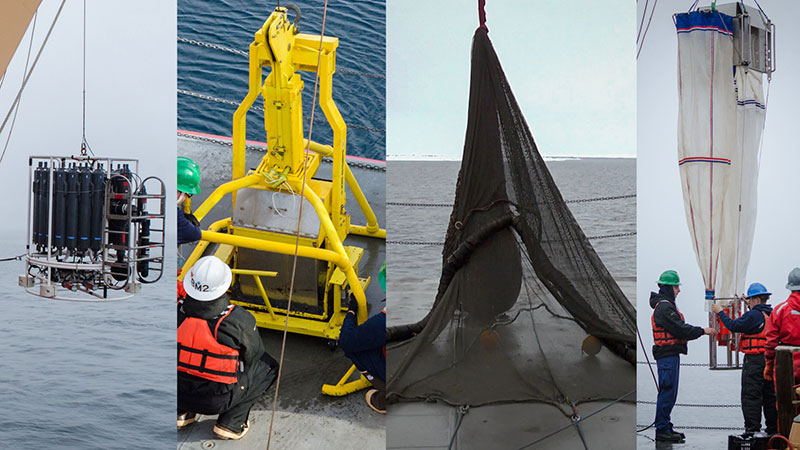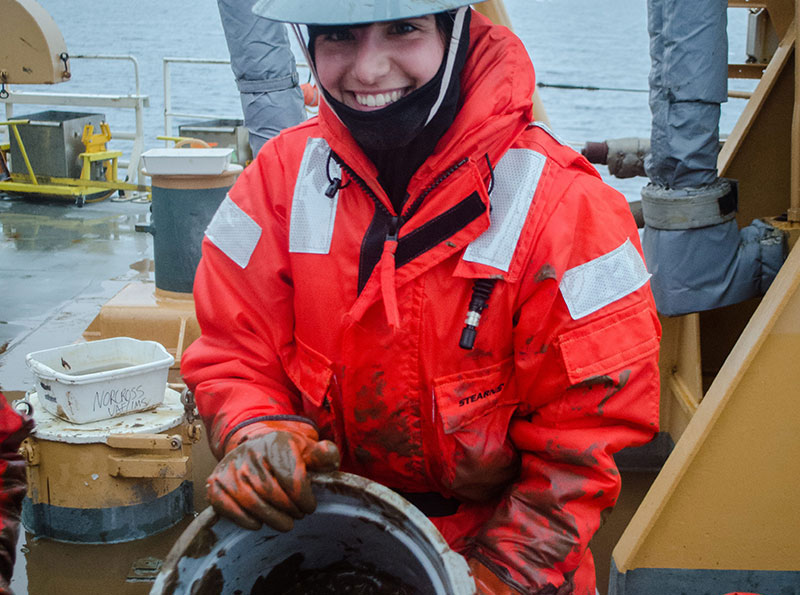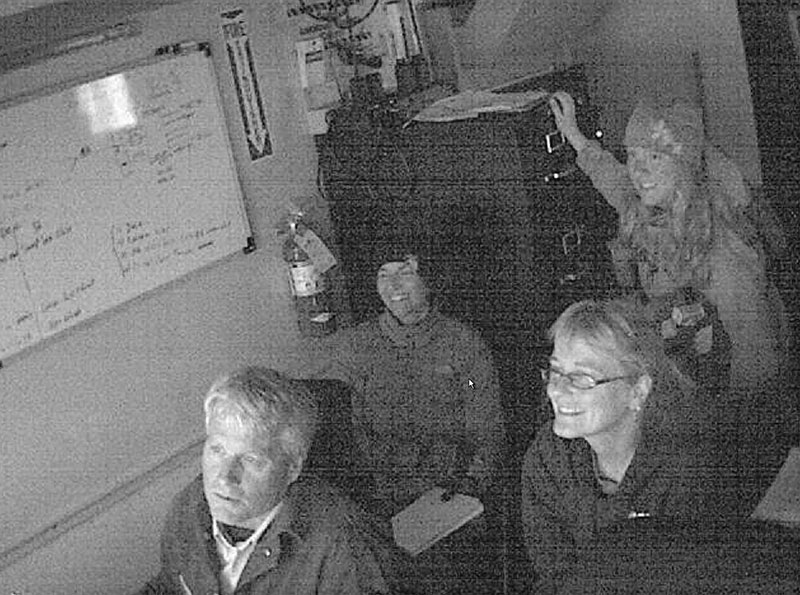
By Lauren Sutton, University of Alaska Fairbanks, Graduate Student
July 14, 2016
This Aulacoctena is a species of comb jelly that was imaged by the ROV Global Explorer and is about the size of an orange. Unlike jellyfish, comb jellies do not have stinging cells. Video courtesy of The Hidden Ocean 2016: Chukchi Borderlands, Oceaneering-DSSI. Download larger version (mp4, 5.4 MB).
I have been fortunate enough to find myself as one of many scientists aboard the U.S. Coast Guard Cutter Healy for the 2016 Hidden Oceans mission in the Chukchi Borderlands. As a new (and when I say new, I mean I will start classes in late August) graduate student at the University of Alaska Fairbanks I am extremely excited and eager to learn as much marine biology and oceanography as I can!

Besides the ROV, the other four significant instruments used to collect scientific data on this expedition are (in order) the CTD, box core, trawl, and multinet. Images courtesy of Caitlin Bailey, GFOE, The Hidden Ocean 2016: Chukchi Borderlands. Download larger version (686 KB).
I was invited on this cruise by my adviser, Dr. Katrin Iken, to get field experience in studying the benthic epifuana, or the animals that live on top of the seafloor. In essence, my graduate research will focus on these creatures and their role in Arctic biodiversity. So I get to be in the field, digging through sediment and collecting samples and data for my research before I even start classes! This field work is giving me much insight and understanding of the Arctic ecosystem that would not have been possible from classroom lectures or scientific literature.
The first station went by like a whirlwind! Our sampling was delayed by a few days due to ice conditions (see Kate Segarra’s mission log on our days in an ice floe). Once we arrived, we started our 24-hour day of science. My first task was making notes about the benthic species found by the remotely operated vehicle (ROV) Global Explorer (see Joe Caba’s log about the ROV here) at almost 900 meters deep. The ROV did two different dives: one for the pelagic (water column) team and another for the benthic team. The science team also did a few CTD casts, collected plankton with multi-nets, collected sediment in box cores, and trawled for benthic organisms.
The ROV operations happen from a shipping-like box container converted into a work station with six 40-inch monitors showing all the different cameras attached to the actual ROV. Once the ROV is lowered in the water, the pilot controls the ROV while another co-pilot controls the ROV cameras which zoom in on specific creatures or take still pictures of interesting things.

Lauren Sutton displays a bucket of mud from the trawl that contains various organisms, including sea stars and mollusks. Image courtesy of Caitlin Bailey, GFOE, The Hidden Ocean 2016: Chukchi Borderlands. Download larger version (jpg, 3.6 MB).

A night vision camera in the ROV control van captures the excited faces of Joe Caba, Dr. Katrin Iken, Lauren Sutton, and Kelly Walker as they watch the live camera feed from the ROV Global Explorer as it explores the Arctic seafloor. Image courtesy of Caitlin Bailey, GFOE, The Hidden Ocean 2016: Chukchi Borderlands. Download larger version (jpg, 686 KB).
While sitting in the darkened shipping container, Dr. Iken would ask the pilots to target specific areas of the benthos. Basically once on the seafloor, Dr. Iken would say "follow that fish" or "see what that stick shooting out of the mud is." The ROV would focus in on these creatures and then I would annotate the species, time, GPS coordinates, and which camera had the best view. This will make it easier when we look back at all this footage. Through all of this, we are really just exploring the benthos looking for neat things...I knew this is what real science was all about!
While in the field, we really don't know what we will find, what obstacles we'll encounter, or what split-second decisions we will have to make. We truly are in a harsh Arctic climate and are at the mercy of the winds, currents, ship condition, and equipment. There is not a lot of sleep amongst the scientists, but through a group effort (including the Coast Guard), a lot of amazing science is able to occur 24 hours a day here on the Healy!